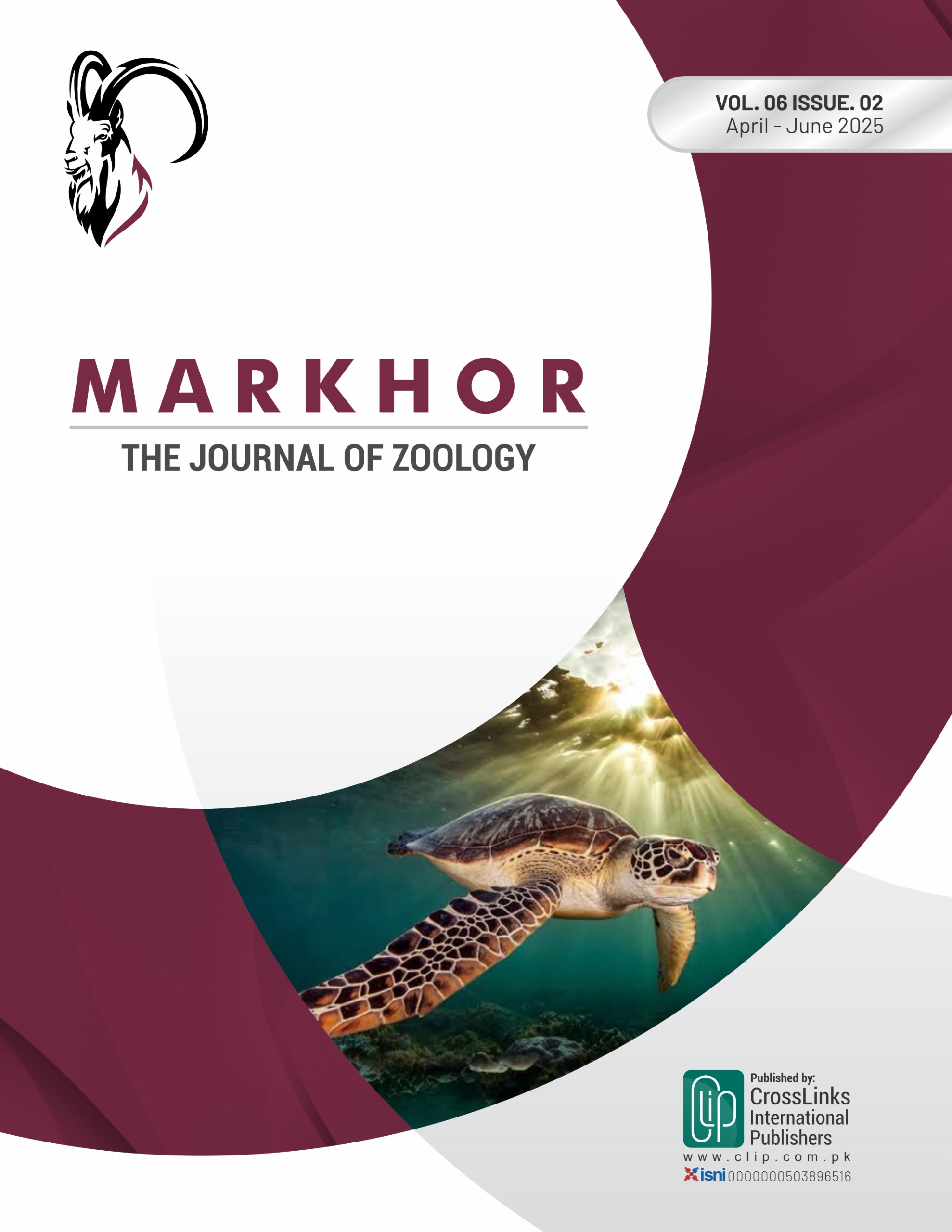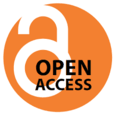Development and Implementation of an Optimized Rearing Protocol for Peafowl and Pheasant Chicks
Optimized Rearing Protocol for Peafowl and Pheasant Chicks
DOI:
https://doi.org/10.54393/mjz.v6i2.166Keywords:
Peafowls, Pheasants, Rearing Protocol, Hatchability, Fertility RateAbstract
Maintaining high fertility and hatchability is essential for producing healthy chicks. Objectives: To identify factors affecting hatchability and fertility rates to develop effective rearing practices. Methods: The investigated factors responsible for lower fertility and lower hatchability rates were improper male-to-female ratios, the age of breeder flocks, egg storage duration, sand bedding, remnants of dead shells in incubators, rectangular brooders, and the absence of vaccinations and deworming. Data analysis involved the use of descriptive statistics and hypothesis testing. The study was based on one year of experimental data (January 2023 - September 2023) and six years of records from the Jallo Park Lahore captive breeding center (2017-2022). This research focused on two bird groups from the Galliformes order: peafowl and pheasant. This study analyzed 1,400 hatching eggs from six different peafowl breeder flocks and 1,480 hatching eggs from five pheasant breeder flocks. Results: Hatchability ratio in peafowl improved from 16% in 2017 to 60% in 2023, while fertility rates increased from 26% to 82% in 2023. For pheasant, hatchability rose from 34% in 2017 to 60% in 2023, with fertility rates reaching a peak of 86% in 2023. Conclusions: It was concluded that implementing a new protocol can improve both fertility and hatchability. Key components of this protocol for improving fertility include male-to-female ratio, timely egg collection, and proper floor bedding. To improve hatchability, clean the incubators, use circular brooders to reduce mortality, and apply vaccination and deworming, all of which significantly impact outcomes.
References
Kabir A and Hawkeswood TJ. Captive breeding and rehabilitation of Peafowls (Aves: Phasianidae) in Bangladesh. Calodema. 2021; 890: 1-4.
Giersberg MF, Molenaar R, de Jong IC, da Silva CS, van den Brand H, Kemp B et al. Effects of hatching system on the welfare of broiler chickens in early and later life. Poultry Science. 2021 Mar; 100(3): 100946. doi: 10.1016/j.psj.2020.12.043.
Wickramasuriya SS, Park I, Lee Y, Lillehoj HS. Effect of dietary organic selenium on growth performance, gut health, and coccidiosis response in broiler chickens. Animals. 2023 May; 13(9): 1560. doi: 10.3390/ani13091560.
Muniz EC, Freitas CM, Godoi BC, Barbosa CC, Aoki SM, Salles GB et al. Evaluation of the Performance of a New Pentavalent Vaccine in Poultry. Brazilian Journal of Poultry Science. 2024 May; 26: eRBCA-2023. doi: 10.1590/1806-9061-2023-1771.
Chousalkar KK, Khan S, McWhorter AR. Microbial quality, safety and storage of eggs. Current Opinion in Food Science. 2021 Apr; 38: 91-5. doi: 10.1016/j.cofs.2020.10.022.
Ashrafzadeh MR, Khosravi R, Fernandes C, Aguayo C, Bagi Z, Lavadinović VM et al. Assessing the origin, genetic structure and demographic history of the common pheasant (Phasianus colchicus) in the introduced European range. Scientific Reports. 2021 Nov; 11(1): 21721. doi: 10.1038/s41598-021-00567-1.
Salamon A. Fertility and hatchability in goose eggs: A review. International Journal of Poultry Science. 2020 Jan; 19(2): 51-65. doi: 10.3923/ijps.2020.51.65.
Fathi M, Abou-Emera O, Al-Homidan I, Galal A, Rayan G. Effect of genotype and egg weight on hatchability properties and embryonic mortality pattern of native chicken populations. Poultry Science. 2022 Nov; 101(11): 102129. doi: 10.1016/j.psj.2022.102129.
Miazi OF, Das A, Shaha M, Khan MM, Hassan MM, Shahadat MA et al. Disease Conditions and Different Abnormalities of Indian Peafowl and its Treatment in Captivity. International Journal of Advanced Research in Biological. 2024 Apr; 11(4): 1-4.
Khalid S, Ashraf S, Khan S, Khalid W, Chamba MV. Comparative study of egg quality parameters of different breeds of peacock. International Journal of Food Properties. 2023 Sep; 26(1): 1749-59. doi: 10.1080/10942912.2023.2230378.
Meissner W, Wardecki Ł, Antczak J, Betleja J, Cząstkiewicz D, Czechowski P et al. Zimowanie ptaków wodnych na obszarach miejskich w Polsce w roku 2023. Ornis Polonica. 2024; 65(1).
Khan MT, Niazi AS, Arslan M, Azhar M, Asad T, Raziq F et al. Effects of selenium supplementation on the growth performance, slaughter characteristics, and blood biochemistry of naked neck chicken. Poultry Science. 2023 Mar; 102(3): 102420. doi: 10.1016/j.psj.2022.102420.
Dickens MJ, Earle KA, Romero LM. Initial transference of wild birds to captivity alters stress physiology. General and Comparative Endocrinology. 2009 Jan; 160(1): 76-83. doi: 10.1016/j.ygcen.2008.10.023.
Shahid B, Ihsan M, Khan MI. A Study of Egg Quality, Fertility and Hatchability in Kashmiri Rhode Island Red Chicken Breed. Proceedings of the Pakistan Academy of Sciences: B. Life and Environmental Sciences. 2024 Sep; 61(3): 259-72. doi: 10.53560/PPASB(61-3)839.
Subagja H, Nadia ZA, Zubaidah S. Effect of hygiene on hatching performance of duck eggs (Anas platyrhynchos domesticus). Advances in Animal and Veterinary Sciences. 2025; 13(5): 1060-5. doi: 10.17582/journal.aavs/2025/13.5.1060.1065.
Al-Obaidi FA and Al-Shadeedi SM. Effect of age and seasons on egg production and egg morphology of peafowl reared outdoors in Baghdad. Biochemical and Cellular Archives. 2020 Apr; 20(1): 791-5.
Lin MJ, Chang SC, Lin LJ, Peng SY, Lee TT. Effect of laying parity and sex ratio on reproduction performance and biochemical parameters of White Roman geese kept in an environmentally controlled house. British Poultry Science. 2025 Mar; 66(2): 266-74. doi: 10.1080/00071668.2024.2403490.
Schmidt A, Beane G, Martin JA. Source population and time spent in captivity affect survival and reproduction of long‐distance translocated northern bobwhites. Animal Conservation. 2024 Aug. doi: 10.1111/acv.12985.
Ibrahim HM, Salem HM, Alamoudi SA, Al-Hoshani N, Alkahtani AM, Alshammari NM et al. Evaluating the Bactericidal Activity of Various Disinfectants against Pseudomonas aeruginosa Contamination in Broiler Chicken Hatcheries. Pakistan Veterinary Journal. 2024 Jul; 44(3).
Hauck R and Macklin KS. Vaccination against poultry parasites. Avian Diseases. 2024 Jan; 67(4): 441-9. doi: 10.1637/aviandiseases-D-23-99989.
Wang Q, Wang Q, Wang C, Sun C, Yang N, Wen C. Genetic improvement of duration of fertility in chickens and its commercial application for extending insemination intervals. Poultry Science. 2024 Mar; 103(3): 103438. doi: 10.1016/j.psj.2024.103438.
Fukuhara R, Agarie J, Furugen M, Seki H. Nesting habitats of free-ranging Indian peafowl, Pavo cristatus, revealed by sniffer dogs in Okinawa, Japan. Applied Animal Behaviour Science. 2022 Apr; 249: 105605. doi: 10.1016/j.applanim.2022.105605.
Wegner M, Kokoszyński D, Kotowicz M, Krajewski K. Effect of housing system on carcass composition, meat quality, digestive morphometry, and leg bone dimensions of Ross 308 parent broilers. Poultry Science. 2024 Mar; 103(3): 103384. doi: 10.1016/j.psj.2023.103384.
Tariq M, Butt NS, Mansha M, Bhinder MA. 34. Breeding performance and disease profile of six peafowl species in captivity at Jallo breeding center, Lahore. Pure and Applied Biology. 2019 Feb; 8(1): 312-20.
Tainika B, Abdallah N, Damaziak K, Waithaka Ng’ang’a Z, Shah T, Wójcik W. Egg storage conditions and manipulations during storage: effect on egg quality traits, embryonic development, hatchability and chick quality of broiler hatching eggs. World's Poultry Science Journal. 2024 Jan; 80(1): 75-107. doi: 10.1080/00439339.2023.2252785.
Prabowo MC, Sayekti I, Astuti S, Nursaputro ST, Supriyati S. Development of an IoT-based egg incubator with PID control system and web application. JOIV: International Journal on Informatics Visualization. 2024 Mar; 8(1): 465-72. doi: 10.62527/joiv.8.1.2044.
Yenilmez F. Peafowl Production. Turkish Journal of Agriculture-Food Science and Technology. 2020 Apr; 8(4): 945-8. doi: 10.24925/turjaf.v8i4.945-948.3198.
Saidane Z, Dahou AA, Daoudi M, Dahmouni S, Homrani A. Consequences of Technical and Sanitary Practices on Laying and Hatching Rates in the Gallus gallus domesticus Meat Sector in the Mostaganem Region (Algeria). Acta Veterinaria Eurasia. 2024 Jan; 50(1). doi: 10.5152/actavet.2024.23032.
Fijalovych LM, Kyryliv YI, Barylo BS, Paskevych GА, Lunyk JM, Petryshak OI et al. Peculiarities of keeping pheasants. Scientific Messenger of LNU of Veterinary Medicine and Biotechnologies. Series: Agricultural Sciences. 2023 Mar; 25(98): 125-31. doi: 10.32718/nvlvet-a9821.
Hardy IC, Wajnberg E, editors. Jervis's insects as natural enemies: practical perspectives. Cham, Switzerland: Springer. 2023 Nov. doi: 10.1007/978-3-031-23880-2.
Tomczyk G, Niczyporuk JS, Kozdruń W, Sawicka-Durkalec A, Bocian Ł, Barabasz M et al. Probiotic supplementation as an alternative to antibiotics in broiler chickens. Journal of Veterinary Research. 2024 Mar; 68(1): 147. doi: 10.2478/jvetres-2024-0009.
Downloads
Published
How to Cite
Issue
Section
License
Copyright (c) 2025 MARKHOR (The Journal of Zoology)

This work is licensed under a Creative Commons Attribution 4.0 International License.
This is an open-access journal and all the published articles / items are distributed under the terms of the Creative Commons Attribution License, which permits unrestricted use, distribution, and reproduction in any medium, provided the original author and source are credited. For comments editor@markhorjournal.com











